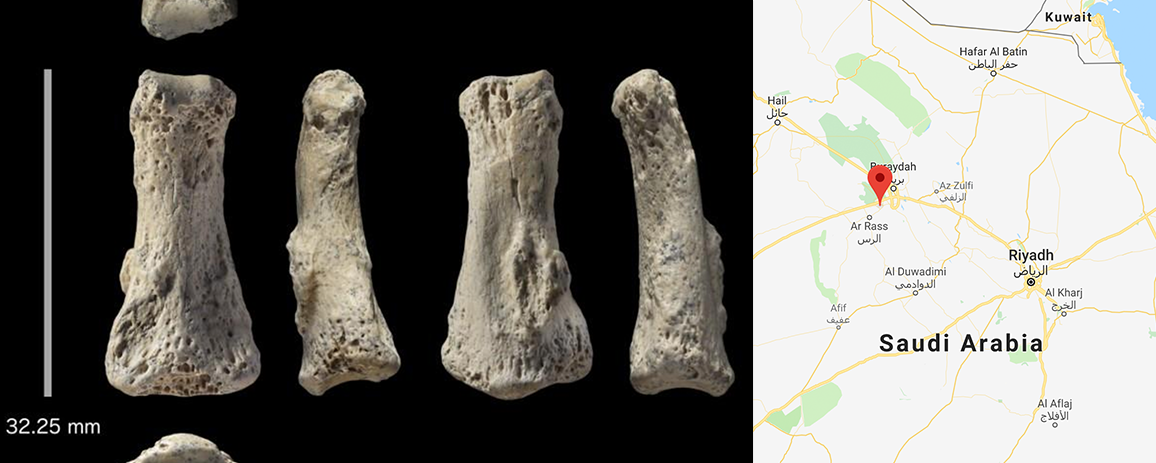A recently discovered fossil finger bone dating back about 90,000 years that was unearthed in Saudi Arabia’s Nefud Desert is “pointing to what scientists are calling a new understanding of how our species came out of Africa en route to colonizing the world,” Reuters reports.
The discovery, the middle bone of an adult’s middle finger, was found at a site called Al Wusta and is believed to be the oldest Homo sapiens fossil discovered outside of Africa and the immediately adjacent eastern Mediterranean Levant region, as well as the first ancient human fossil from the Arabian peninsula, according to Reuters, which notes that the Nefud Desert was once a hospitable grassland with a freshwater lake.
The discovery changes a previously-held belief by anthropologists that humans rapidly migrated out of Africa 60,000 years ago, and instead presents a “much more complicated scenario of migration.”
Saudi Arabia’s 830,000 square miles of land is peppered with important anthropological discoveries and archeological sites. Vision 2030 calls for Saudi Arabia to develop some of its heritage sites for visitors to preserve the Kingdom’s culture and attract visitors.
Iyad Zalmout, a scientist with the Saudi Geological Survey, discovered the bone when he decided to go for a stroll, according to Gizmodo. “And in a complete moment of serendipity, Zalmout—a trained paleontologist—noticed a single, skeletal finger joint just lying in the sand.”
In addition to the finger bone, numerous animal fossils were discovered, including hippos, wild cattle, antelopes and ostriches.









